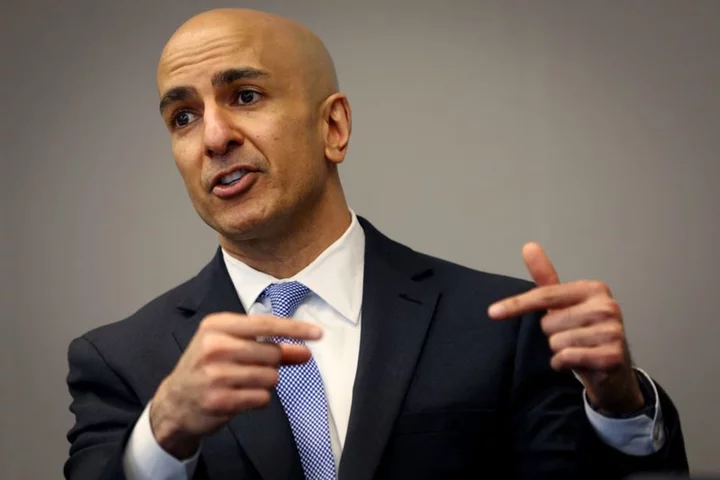By Ann Saphir
A "soft landing" for the U.S. economy is more likely than not, Minneapolis Federal Reserve Bank President Neel Kashkari said on Tuesday, but there is also a 40% chance that the Fed will need to raise interest rates "meaningfully" to beat inflation.
Under the more likely scenario -- Kashkari pegged the probability at about 60% -- the Fed "potentially" raises rates one more quarter of a percentage point and then holds borrowing costs steady "long enough to bring inflation back to target in a reasonable period of time," he said in an essay published on the regional Fed bank's website.
Inflation by the Fed's preferred measure has dropped from 7% last summer to 3.3% this past July, and U.S. unemployment has only ticked up a bit, reaching 3.8% at last read.
That is substantial progress on inflation and a still-healthy labor market, Kashkari said, and under the more-probable scenario he sees, "the policy tightening we would soon achieve would prove enough to finish the job" and deliver "the proverbial soft landing that we are hoping to achieve."
But under a still very possible turn of events - Kashkari puts the likelihood at 40% -- inflation stays sticky at near 3%, but households feel confident enough about the economy that they continue to spend, keeping upward pressure on prices already elevated by post-pandemic supply constraints.
"Once supply factors have fully recovered, is policy tight enough to complete the job of bringing services inflation back to target?" Kashkari said, playing this less-rosy scenario forward. "It might not be, in which case we would have to push the federal funds rate higher, potentially meaningfully higher."
The Fed last week held its policy rate steady in a range of 5.25%-5.50%, but most policymakers signaled they believe one more interest-rate hike by the end of the year will likely be appropriate. Kashkari said on Monday he is in that majority.
"The good news is that we don’t need to make this determination right now," Kashkari said in the essay. "We can observe the actual progress in bringing inflation down over the next several months to determine which scenario is the dominant one."
(Reporting by Ann Saphir; Editing by Sharon Singleton)

